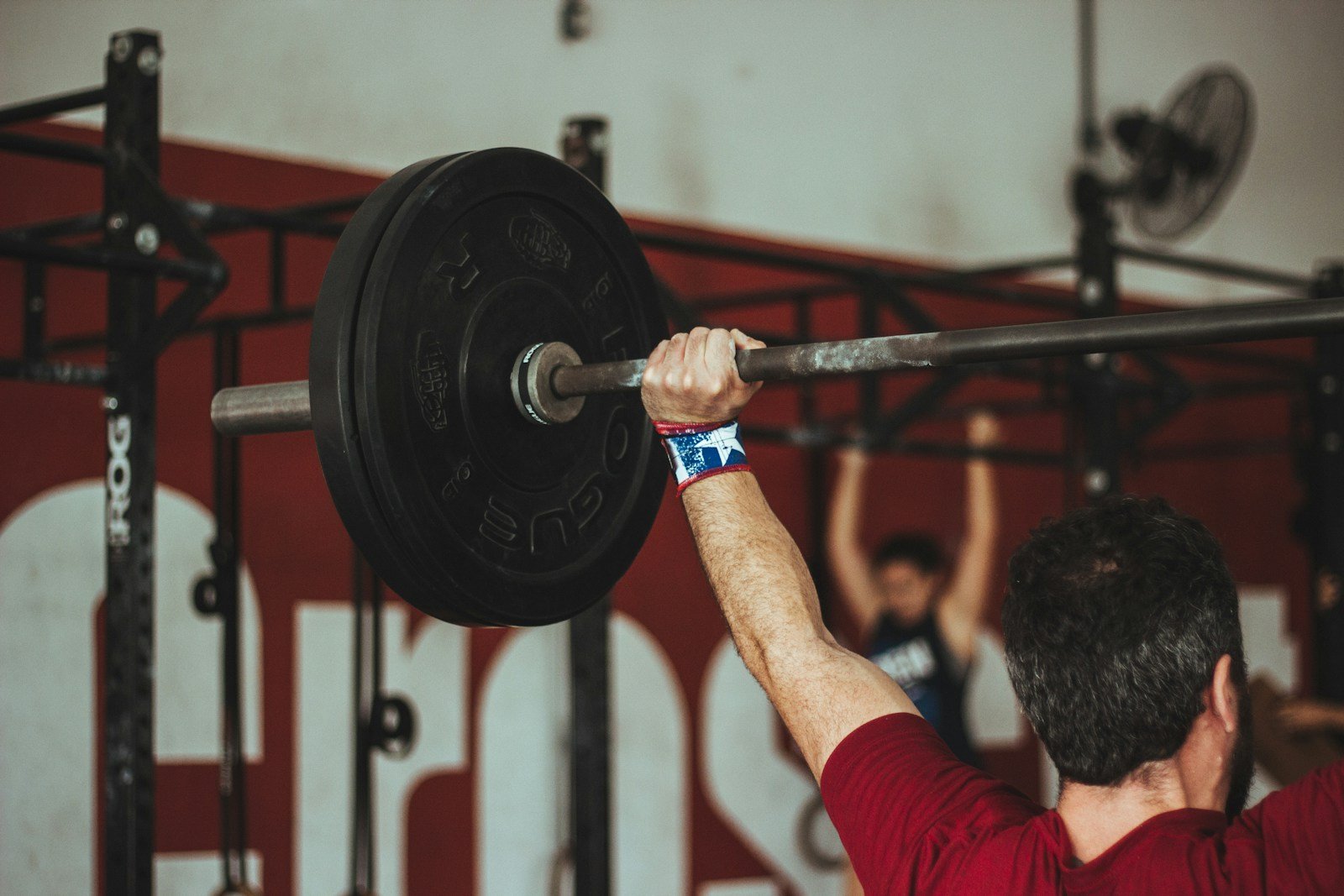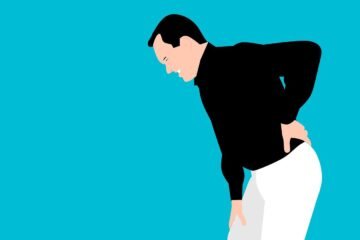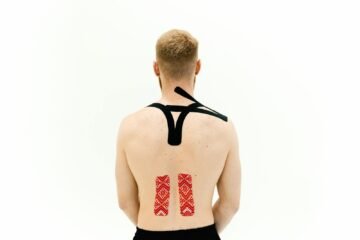Lower back pain is a common issue, especially for people who lift heavy objects regularly. Whether you’re lifting at work, during exercise, or at home, improper lifting techniques or overexertion can cause strain and injury to the muscles and joints in your lower back. In this article, we’ll cover the causes, symptoms, treatments, and prevention strategies for lower back pain caused by lifting.
Causes of Lower Back Pain from Lifting
Lifting heavy objects can cause various types of back injuries. Some of the most common reasons for lower back pain from lifting include:
1. Muscle Strain
One of the most common causes of lower back pain after lifting is a muscle strain. When you lift improperly or lift more than your muscles can handle, you can overstretch or tear the muscles in your lower back. This often leads to sharp or aching pain that can last for days or even weeks.
2. Herniated Disc
A herniated disc occurs when one of the discs in your spine ruptures or slips out of place, pressing on nearby nerves. Lifting heavy objects with poor form can increase the risk of herniated discs, leading to severe pain, numbness, or tingling in your lower back and legs.
3. Ligament Sprain
Ligaments are tough bands of tissue that connect bones to each other. If you lift too much weight or twist while lifting, you can overstretch or tear a ligament in your back, causing a sprain. This can result in lower back pain and stiffness.
4. Poor Lifting Technique
Using improper form while lifting can put extra strain on your lower back. For example, bending at the waist instead of at the knees or twisting while lifting can lead to lower back injuries. Repeated poor lifting techniques can weaken your back over time, making it more prone to pain and injury.
5. Overuse or Repetitive Movements
If your job or exercise routine involves lifting heavy objects frequently, overuse and repetitive movements can lead to lower back pain. Over time, repeated strain on your lower back muscles and joints can cause pain and inflammation.
Symptoms of Lower Back Pain from Lifting
Lower back pain from lifting can vary depending on the severity of the injury and the specific cause. Some common symptoms include:
- Sharp or dull pain in the lower back
- Stiffness or reduced range of motion
- Muscle spasms
- Pain that worsens with movement or lifting
- Pain that radiates into the buttocks or legs
- Numbness or tingling in the legs (in cases of nerve compression)
If you experience severe pain, loss of bladder or bowel control, or weakness in your legs, you should seek immediate medical attention as these may be signs of a more serious injury.
Treating Lower Back Pain from Lifting
Fortunately, most cases of lower back pain from lifting can be treated with simple home remedies. However, in more severe cases, medical intervention may be necessary. Here are some common treatment options:
1. Rest
If you’ve strained your back from lifting, it’s important to give your body time to heal. Rest for a day or two and avoid any heavy lifting or strenuous activity that could worsen the injury. However, avoid staying in bed for long periods as too much rest can weaken your muscles.
2. Ice and Heat Therapy
Applying ice to the affected area within the first 48 hours of injury can help reduce swelling and numb the pain. After the initial swelling has gone down, applying heat can help relax tight muscles and improve blood flow to the area. Use a heating pad or take a warm bath to ease discomfort.
3. Over-the-Counter Pain Relievers
Nonsteroidal anti-inflammatory drugs (NSAIDs) such as ibuprofen or aspirin can help reduce pain and inflammation. Always follow the dosage instructions and consult a doctor if you have any concerns.
4. Gentle Stretches and Exercises
Once the pain begins to subside, gentle stretching and strengthening exercises can help improve flexibility and support your lower back. Focus on exercises that target your core muscles, as a strong core helps stabilize and protect your spine. Some exercises to consider include:
- Knee-to-Chest Stretch: Gently pull one knee toward your chest while lying on your back to stretch the lower back.
- Pelvic Tilts: Lie on your back with your knees bent, and slowly rock your pelvis upward to stretch your back.
- Cat-Cow Stretch: This yoga move helps increase flexibility and reduce tension in the spine.
Table: Sample Stretching Exercises for Lower Back Pain Relief
| Exercise Name | Description | Duration |
| Knee-to-Chest Stretch | Lie on your back and pull one knee toward your chest. | Hold for 20 seconds per leg. |
| Pelvic Tilts | Gently rock your pelvis upward while lying on your back. | 10-15 repetitions. |
| Cat-Cow Stretch | Move between arching your back and rounding your spine in a tabletop position. | 10-15 repetitions. |
5. Physical Therapy
If your lower back pain persists or is severe, your doctor may recommend physical therapy. A physical therapist can guide you through exercises to strengthen your core and improve your posture, helping to prevent future injuries.
6. Chiropractic Care
Chiropractic adjustments can help realign your spine and relieve pressure on the nerves, which may help reduce lower back pain. A chiropractor can also recommend exercises and lifestyle changes to promote better back health.
7. Prescription Medications
In more severe cases of lower back pain, your doctor may prescribe stronger medications, such as muscle relaxants or pain relievers. These medications should only be used under a doctor’s supervision, as they can have side effects or be habit-forming.
Preventing Lower Back Pain from Lifting
While it’s possible to recover from lower back pain caused by lifting, prevention is always better than treatment. Here are some tips to avoid back pain in the future:
Previous Post: Understanding Right Mid Back Pain: Causes, Symptoms, and Treatments
1. Use Proper Lifting Techniques
To protect your back while lifting, always use proper form. Here’s how:
- Bend at your knees, not your waist.
- Keep the object close to your body.
- Lift with your legs, not your back.
- Avoid twisting your body while lifting.
- Ask for help if the object is too heavy.
2. Strengthen Your Core
A strong core supports your spine and reduces the risk of back injuries. Incorporate exercises that target your abdominal and back muscles into your fitness routine, such as planks, bridges, and leg lifts.
3. Stretch Regularly
Stretching improves flexibility and reduces the risk of muscle strains. Take time to stretch your back, hips, and legs, especially before lifting heavy objects or engaging in physical activity.
4. Avoid Lifting Heavy Objects Alone
If an object is too heavy or awkward to lift, don’t hesitate to ask for help. Trying to lift too much on your own increases the risk of injury.
5. Maintain a Healthy Weight
Excess weight puts added strain on your lower back, increasing the risk of pain and injury. Eating a balanced diet and staying active can help you maintain a healthy weight and protect your back.
When to See a Doctor for Lower Back Pain from Lifting

While most cases of lower back pain from lifting resolve on their own with rest and at-home treatments, there are certain situations where you should seek medical attention. If you experience any of the following symptoms, it’s important to see a doctor:
- Severe pain that doesn’t improve with rest or treatment: If your pain is getting worse or not improving after a few days, it could be a sign of a more serious injury, such as a herniated disc or nerve damage.
- Pain that radiates down your legs: Pain that spreads from your lower back to your legs, known as sciatica, may indicate a pinched nerve or a herniated disc.
- Numbness, tingling, or weakness in your legs: These symptoms suggest nerve involvement and could be a sign of more severe spinal issues.
- Loss of bladder or bowel control: If you experience sudden incontinence, it could be a sign of a condition called cauda equina syndrome, which requires immediate medical attention.
- Persistent pain after an accident or injury: If your pain started after a fall or a car accident, it’s important to see a doctor to rule out any fractures or serious injuries.
Your doctor may perform a physical exam, order imaging tests such as X-rays or MRIs, and recommend treatments based on your specific condition.
Long-Term Management of Lower Back Pain
For some individuals, lower back pain can become a recurring issue, especially if their job or hobbies involve heavy lifting. Long-term management of lower back pain involves making lifestyle changes to prevent future injuries and keep your back healthy.
1. Strengthening and Flexibility Exercises
Regularly incorporating strengthening and flexibility exercises into your routine can help prevent future episodes of lower back pain. Strengthening your core and back muscles can reduce the strain on your spine and improve your posture. Flexibility exercises, such as yoga or Pilates, can help increase the range of motion in your back and reduce stiffness.
2. Ergonomic Improvements
If your job involves lifting or sitting for long periods, making ergonomic adjustments can help reduce the risk of back pain. This could involve adjusting your desk and chair setup to support your back, using lifting aids, or wearing a back brace when necessary.
3. Weight Management
Maintaining a healthy weight can significantly reduce the strain on your lower back. Excess weight, particularly around the abdomen, pulls on the lower back and increases the risk of injury. A balanced diet and regular exercise can help you manage your weight and keep your back healthy.
4. Posture Correction
Poor posture is a leading cause of lower back pain. Whether you’re sitting, standing, or lifting, paying attention to your posture can help reduce the strain on your back. Stand with your shoulders back and your spine neutral, and avoid slouching when sitting for extended periods.
5. Regular Physical Activity
Staying active can help prevent stiffness and keep your back strong. Low-impact activities such as walking, swimming, or cycling are great ways to maintain back health without putting excessive strain on your spine.
Conclusion
Lower back pain from lifting is a common issue that affects many people, whether due to improper technique, overexertion, or underlying conditions like herniated discs. Fortunately, most cases can be managed with rest, stretching, and over-the-counter medications. To prevent future injuries, it’s crucial to use proper lifting techniques, strengthen your core, and make ergonomic improvements to your work environment.
By following the prevention tips outlined above, you can reduce your risk of lower back pain and keep your spine healthy and strong for years to come. If you experience severe or persistent pain, always seek medical advice to ensure proper diagnosis and treatment.
For more information about back pain management, you can visit Healthline or Cleveland Clinic. These trusted sources provide in-depth guides and expert advice on how to handle back pain and maintain a healthy spine.




